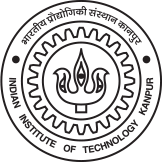
Madhav V Ranganathan
PhD (Stanford University)
Professor, Department of Chemistry
Research Interest
Modeling and Simulation of crystal growth of classical semiconductors and 2D materials
Old SAC C'-CHM-104,
Department of Chemistry
IIT Kanpur,
Kanpur 208016
Research Area
Specialization
Physical Chemistry
Education
PhD (2003), Stanford University, USA.
M.Sc. (1996) IIT Bombay.
Teaching Area
Physical Chemistry
All courses and laboratories in Physical Chemistry
Quantum Chemistry
Basic and Advanced Quantum Mechanics
Statistical Mechanics
Classical and quantum statistical mechanics of chemical systems
Chemical Thermodynamics
Equilibrium and nonequilibrium thermodynamics of chemical systems and chemical reactions
Chemical Reaction Kinetics
Phenomenological kinetics, molecular reaction dynamics
Molecular Spectroscopy
Chemical applications of group theory, spectroscopy of small molecules
Solid State Chemistry
Solid State structure, electronic structure, properties and synthesis methods
Selected Publications
Submonolayer growth study using a solid-on-solid model for 2 × 1 reconstructed surfaces of diamond-like lattices, Surf. Sci., 630, 174 (2014)
Impurity Effects in Crystal growth from solutions: Steady states, transients and step bunch motion, J. Cryst. Growth., 393, 35 (2014).
A genome-wide screen indicates correlation between differentiation and expression of metabolism related genes, PLoS ONE 8, e63670, (2013).
Impurity induced step pinning and recovery in crystal growth from solutions, Phys. Rev. Lett., 110, 055503 (2013).
Kinetic Monte Carlo simulations of heteroepitaxial growth with an atomistic model of elasticity, Surf. Sci., 606, 1450 (2012).
Spiral Evolution in Confined Geometry, Phys. Rev. Lett., 95, 225505 (2005).
Professional Experience
IIT Kanpur, 2007-.
CNRS, Marseille, France, 2006-2007
University of Maryland, College Park, USA. 2003-2006
Current Research
Understanding the morphology of growing crystals under different conditions is a fundamental problem that has implications in a wide variety of systems like electronic and optoelectronic devices and biological systems like kidney stone growth and abalone shell growth. Over the years our group has been using techniques from nonequilibrium statistical mechanics and computer simulation to address different aspects of this problem. One major area where we have worked extensively is that of semiconductor epitaxial crystal growth. We have employed a combination of quantum mechanical methods, lattice-based kinetic Monte Carlo simulations, and continuum surface modeling to understand the morphology of these growing crystals. In particular, we studied Si-Ge heteroepitaxy, GaN homoepitaxy on polar and nonpolar planes and Silicene growth on Ag(111) surfaces. Through our calculations we have investigated the interplay between the inherent anisotropy in the surface energy and surface diffusion on the shapes and semiconductor crystals.



